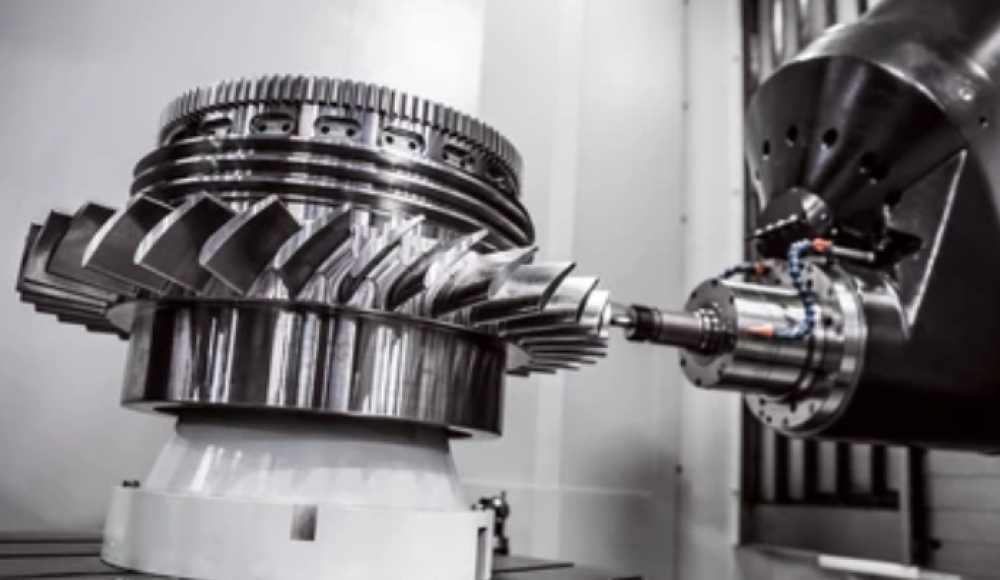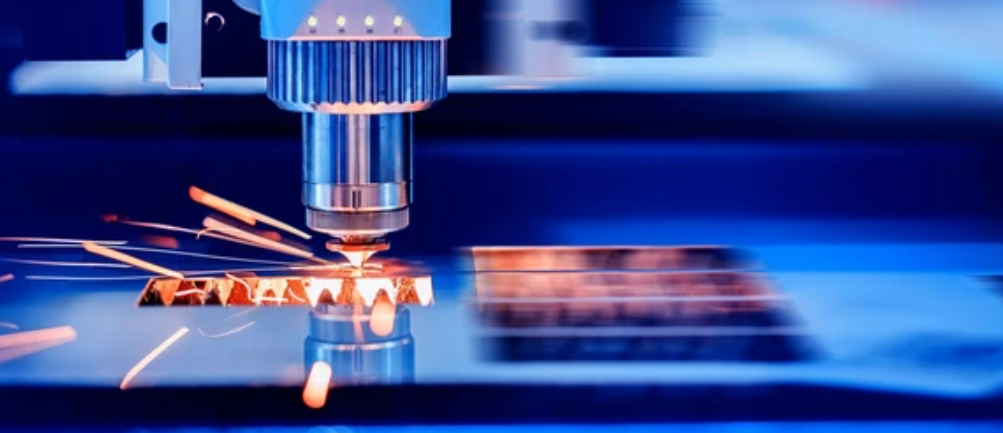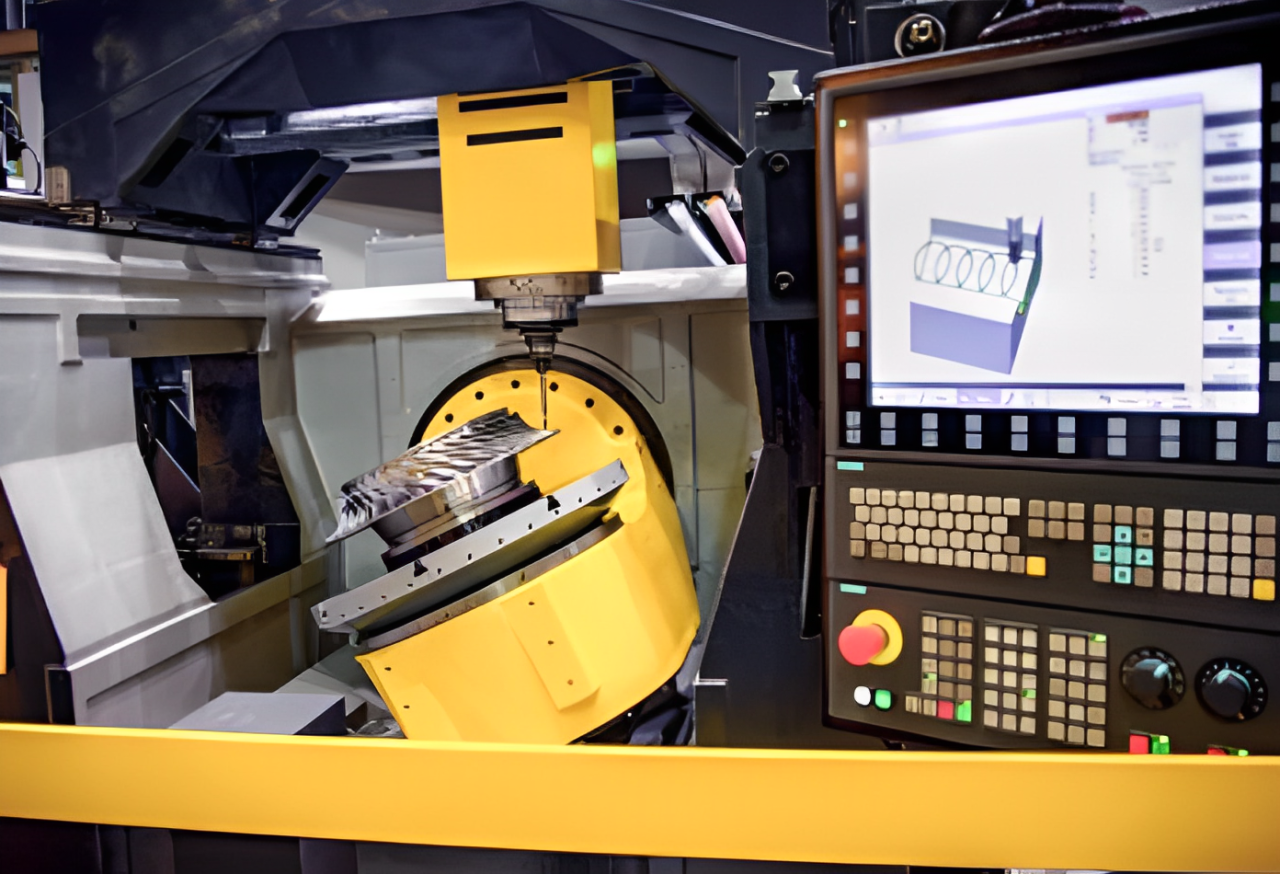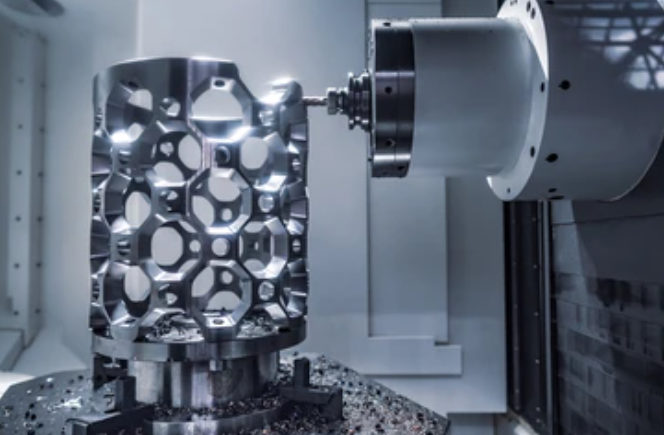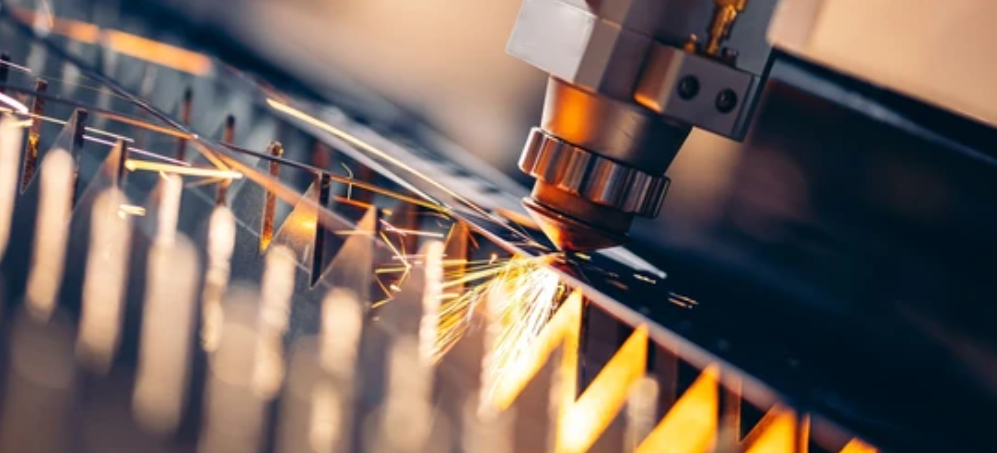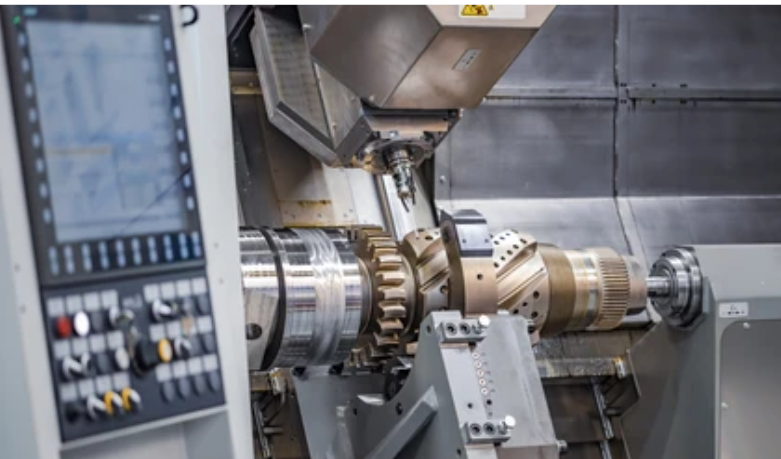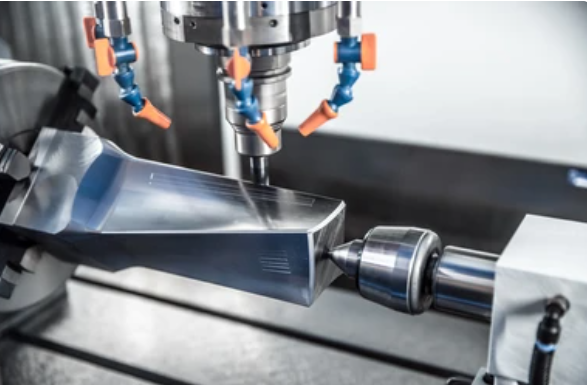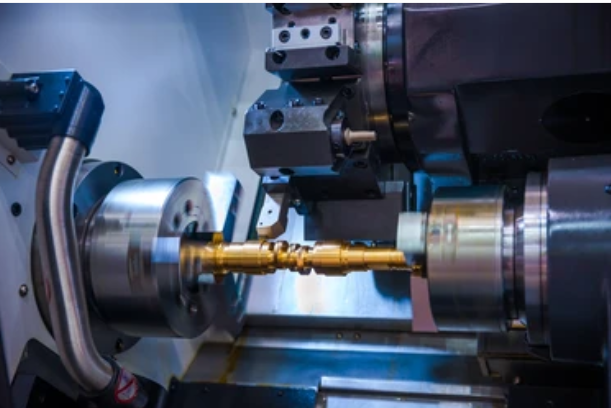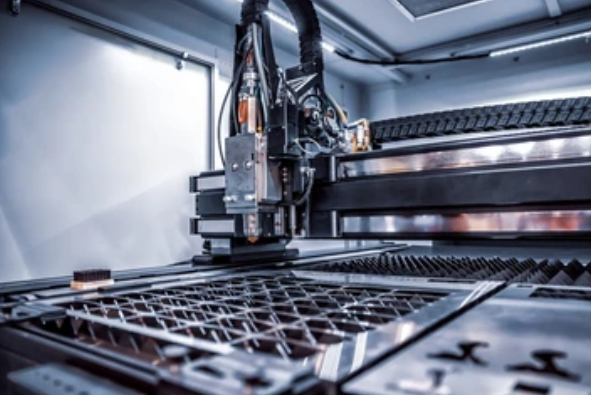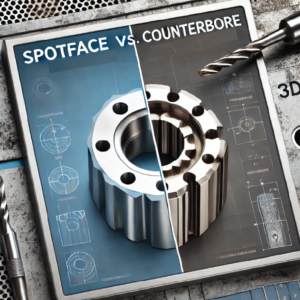A indústria aeroespacial define requisitos rígidos para precisão, padrões de alta qualidade, e confiabilidade absoluta. Na fabricação, CNC (Controle Numérico Computadorizado) ajuda os produtores a fazer componentes complexos de aeronaves que exigem precisão dimensional estrita. Então, Este artigo fornece um exame aprofundado de elementos de usinagem aeroespacial CNC. Pode incluir seu significado com materiais, Perspectivas de avanço da tecnologia, e as próximas direções de mercado.
Então, Vamos entrar na profundidade da usinagem aeroespacial CNC.
O que é usinagem aeroespacial CNC?
O processo de fabricação de componentes relacionados a aeronaves usando máquinas-ferramentas automatizadas operadas por computador constitui usinagem aeroespacial CNC. As peças devem atender aos requisitos exatos dos padrões da indústria aeroespacial devido a necessidades operacionais do equipamento no aeroespacial. além disso, A usinagem CNC permite que os fabricantes criem peças de alto desempenho, fornecendo precisão exigente com repetições confiáveis.
Importância de precisão na indústria aeroespacial
A indústria aeroespacial exige precisão absoluta durante as operações de fabricação. Aqui, Todo componente deve passar um controle rigoroso de qualidade para atender aos padrões de AS9100 e ISO 9001 Certificações do setor. Mesmo mudanças mínimas em suas especificações de projeto podem resultar em falhas catastróficas. Então, Podemos alcançar essa precisão via usinagem CNC. Fornece:
- Precisão no nível de mícrons: Garantindo ajuste e função.
- Consistência na produção: Replicar as especificações exatas em vários componentes.
- Desperdício de material reduzido: Otimizando o uso de materiais aeroespaciais de alto valor.
Usinagem CNC na fabricação de aeronaves
A fabricação de aeronaves depende de equipamentos de usinagem CNC para criar:
- Componentes estruturais da fuselagem precisam de propriedades de alta resistência e baixo peso.
- Blades de turbinas juntamente com câmaras de combustão e componentes do compressor representam peças essenciais do motor.
- Os componentes de montagem do trem de pouso, com precisão, devem suportar cargas operacionais intensas.
- Avionics Housing Functions como um espaço fechado. Abriga sistemas eletrônicos em aeronaves e espaçonave.
- A produção de peças exatas através da usinagem CNC oferece a máxima segurança e eficiência de pico na produção de aeronaves.
Processo de usinagem aeroespacial CNC: Explicação passo a passo
O indústria aeroespacial Depende da automação do CNC para as peças aeroespaciais exatas. Então, Opera sob padrões rígidos aplicados por agências regulatórias. O guia seguinte detalha cada etapa do procedimento.
1. Design e modelagem CAD
Usando SolidWorks ou Catia Software, Engenheiros Construa 3D CAD (Design auxiliado por computador) modelos como a primeira etapa deste processo. O modelo fornece informações exatas sobre dimensões, Além disso, Ele também apresenta características do material e todas as especificações de usinagem. Os engenheiros examinam o projeto para verificar os regulamentos aeroespaciais, como os padrões AS9100 e FAA, ao aprovar o design para outros estágios.
2. Programação de came e geração de patrimônio de ferramentas
O modelo CAD passa pela conversão usando o software CAM para produzir instruções que as máquinas podem entender. As instruções para máquinas CNC especificam a via de movimento juntamente com dados operacionais e de controle de alimentação. Além disso, Os engenheiros encontram e resolvem problemas de fabricação antes de fabricar usando testes de simulação. Então, eles podem fornecer resultados mais precisos e eficientes.
3. Seleção e preparação de material
Os engenheiros devem selecionar alumínio, titânio, Inconel, e fibra de carbono, com compósitos para peças aeroespaciais. Eles oferecem melhor força alta, são leves, e são resistentes ao calor. além disso, A matéria -prima escolhida passa por processamento inicial nas dimensões adequadas antes de receber montagem segura na cama da máquina CNC. Este método impede que a peça de trabalho se mova durante as operações para produzir dimensões precisas.
4. Operações de usinagem CNC para fabricação de peças aeroespaciais
Os componentes aeroespaciais precisam de vários procedimentos de usinagem CNC para precisão dimensional exata com formulários complexos. Estes incluem:
1. Fresagem
Ferramentas de usinagem giram para eliminar o material do componente, formando a forma do alvo.
Peças aeroespaciais complexas, ou seja. Blades de turbina, Permitir que as máquinas passem através de operações do CNC. Essas operações funcionam em várias direções, incluindo 3 eixos, 5-eixo, e sistemas de 7 eixos.
2. Virando
A máquina -ferramenta executa a rotação do material para dar as superfícies externas e internas da ferramenta. Os eixos de motor e os eixos de trem de pouso se beneficiam melhor desse processo devido às suas necessidades cilíndricas.
3. Perfuração e chato
Os fabricantes usam técnicas de perfuração e chato para fazer buracos exatos através dos quais as estruturas de aeronaves recebem seus fixadores, incluindo rebites e parafusos. Além disso, O setor aeroespacial depende de chatos para fornecer tolerâncias precisas com alinhamento preciso.
4. Esmerilhamento e Polimento
Este processo oferece precisão excepcional com a qualidade da superfície perfeita necessária para estruturas aeroespaciais. além disso, A tecnologia encontra uso em aplicações de alta prioridade, incluindo discos de turbinas de motor.
5. Usinagem por descarga elétrica (Música eletrônica)
O processo de remoção de metal através de faíscas elétricas funciona sem tocar o material. Além disso, A tecnologia EDM oferece excelentes resultados ao trabalhar com componentes aeroespaciais de titânio e Inconel devido à sua alta dureza.
5. Usinagem com vários eixos Para peças aeroespaciais complexas
Máquinas Aeroespaciais CNC modernas executam operações simultâneas de vários eixos durante a fabricação para produzir formas complexas precisas.
- O sistema de usinagem de 3 eixos Realiza técnicas de corte simples e é capaz de realizar operações de perfuração.
- Uma máquina de 5 eixos -Executa várias operações de corte angular durante uma única configuração de produção. Acelera o tempo de fabricação e diminui os erros.
- O 7-sistema de eixo - Cria peças complexas exatas, incluindo lâminas de motor a jato.
- Sistemas de usinagem com vários eixos- Reduza o contato do operador e entregue melhores resultados de precisão.
6. Ferramentas de corte e refrigerantes
Ferramentas de corte especializadas tornam -se necessárias para operar em materiais aeroespaciais devido à sua durabilidade.
- Carboneto e PCD (Diamante policristalino) ferramentas- Resista ao desgaste ao cortar titânio e compósitos.
- Motor a jato de alta temperatura As aplicações requerem ferramentas baseadas em cobalto como uma solução de corte.
- O sistema de resfriamento criogênico Emprega nitrogênio líquido ou dióxido de carbono para gerenciar o desgaste da ferramenta, Melhorando assim o desempenho da ferramenta.
Tais métodos de corte protegem os materiais contra a deformação, mantendo resultados exatos e finos.
Acabamento superficial & Revestimentos em usinagem aeroespacial CNC
O processo de acabamento inclui tratamentos de superfície que aumentam a durabilidade, Proteção à corrosão, e aerodinâmica simplificada. Podemos melhorar as propriedades do material através da anodização, níquel revestimento, tiro peening, e revestimentos de barreira térmica. Os acabamentos protegem os componentes de aeronaves de condições ambientais adversas, altas temperaturas, e condições pressurizadas.
- Anodização: Dá maior resistência ao alumínio contra ataques de corrosão.
- Níquel e cromo: Aumenta a capacidade do material de suportar o desgaste.
- Tratamento de peening de tiro: Melhora a força de fadiga dos componentes da aeronave.
- Revestimentos de barreira térmica: Ajude a defender os componentes do motor a jato contra condições extremas de calor.
8. Controle e inspeção de qualidade
A fabricação aeroespacial aplica padrões de avaliação de alta qualidade para operações de segurança e métodos de fabricação precisos. Métodos de detecção, ou seja. CMM, Ferramentas de inspeção do NDT, e digitalização a laser, Identifique falhas do produto. Primeiro, O artigo de inspeção verifica os itens de produção. Pode verificar se todas as especificações são atendidas antes que a produção seja iniciada em larga escala.
9. Automação e robótica em usinagem aeroespacial CNC
Moderno automação Métodos e integração robótica ajudam a usinagem CNC a atingir níveis de maior eficiência e consistência na operação. Um sistema de braço robótico lida com materiais enquanto as máquinas CNC guiadas por IA realizam ajustes em voo. Ajuda os sensores de monitoramento da IoT a rastrear a eficiência operacional da máquina. Tais sistemas tecnológicos reduzem os erros do operador enquanto acelera os processos industriais.
10. Assembléia final e entrega
O processo de produção termina com uma montagem para combinar partes de sistemas de aeronaves. Estes geralmente incluem motores a jato, trem de pouso, e estruturas de fuselagem. A avaliação funcional e dimensional é o último teste que valida a compatibilidade entre o sistema aeroespacial e a aeronave. Produtos parcialmente fabricados são agrupados para entrega a empresas da indústria aeroespacial que os integrarão em seus sistemas.
Propriedades dos materiais usados na usinagem aeroespacial CNC
O setor aeroespacial CNC de usinagem requer materiais que mostram força excepcional, Propriedades leves, melhor tolerância ao calor, e durabilidade para operar em condições de voo extremas. Essas propriedades essenciais devem existir nos componentes aeroespaciais de acordo com a seguinte lista.
1. Alta relação resistência/peso
Para o desempenho ideal e a máxima eficiência de combustível, os materiais aeroespaciais devem ter sua força com propriedades de baixo peso. Ligas de alumínio e ligas de titânio, juntamente com compósitos de fibra de carbono, Dê fuselagens. Além disso, elementos estruturais e fixadores têm força superior porque seu peso permanece mínimo.
2. Resistência à corrosão e oxidação
Os materiais devem corresponder aos critérios para resistir a ataques químicos e infiltração de umidade. A combinação de materiais de liga de titânio com aço inoxidável e superalotas à base de níquel, incluindo Inconel e Hastelloy, oferece durabilidade excepcional durante o serviço estendido em motores a jato e sistemas de escape.
3. Resistência de alta temperatura
Motores a jato ao lado de sistemas de escape exigem materiais que mantêm sua força durante as condições de temperatura extrema. Superlloys baseados em níquel, cobalto, e as ligas de titânio têm uma alta proporção de temperaturas de resistência a alta. Eles podem permanecer fortes e não deformados mais de 1000 ° C.
4. Excelente Maquinabilidade
O processo de corte do CNC precisa de materiais que permitam operações precisas com degradação reduzida da ferramenta. Os produtos de liga de alumínio e magnésio podem ser facilmente usinados, No entanto, o aço inoxidável precisa de ferramentas especializadas para manter a eficiência do processamento.
5. Fadiga e resistência ao estresse
Os componentes aeroespaciais lidam com a pressão mecânica contínua, juntamente com mudanças recorrentes na carga. Compostos de fibra de carbono, titânio, e superloys baseados em níquel se destacam nas propriedades de resistência à fadiga. Ele oferece durabilidade prolongada sob condições de estresse exigentes.
6. Resistência ao impacto e desgaste
Os materiais que suportam sistemas de equipamentos de aterrissagem e lâminas de turbinas precisam de características para resistir às forças de impacto e atrito. Liga à base de cobalto, aço inoxidável, e as super-alojas à base de níquel proporcionam excelente resistência contra o desgaste para aumentar a vida útil do componente aeroespacial.
7. Condutividade elétrica e térmica
As aplicações aeroespaciais precisam de distribuição de calor eficaz e isolamento elétrico. As ligas à base de alumínio e cobre fornecem alta condutividade. No entanto, Plastics de engenharia (OLHADINHA, PTFE, Ultm) Ofereça desempenho de isolamento exemplar para aviônicos e aplicativos de fiação.
Aqui estão alguns dos materiais comuns usados na usinagem aeroespacial CNC:
| Material | Ponto de fusão (°C) | Resistência à tracção (MPa) | Graus comuns | Propriedades principais | Usos comuns |
| Ligas de alumínio | 660 | 310-572 | 6061, 7075, 2024 | Leve, resistente à corrosão, alta relação resistência-peso | A fuselagem, asas, e peças de motor |
| Ligas de titânio | 1,668 | 900-1,200 | Ti-6Al-4V, Of-5553 | Força elevada, aquecer & resistente à corrosão | Motores a jato, trem de pouso |
| Aço inoxidável | 1,400-1,530 | 515-1,600 | 304, 316, 17-4 PH | Forte, corrosão & resistente ao calor | Fixadores, escape, hidráulica |
| Superlloys de níquel | 1,300-1,400 | 1,000-1,500 | Inconel 718, Hastelloy x, MONEL K-500 | Calor extremo & Resistência a oxidação | Lâminas de turbina, dutos de escape |
| Fibra de carbono | N / D | 3,500-6,000 | PRFC, PRFV | Força elevada, Ultra-Lightweight, resistente à fadiga | A fuselagem, asas, e interiores |
| Ligas de magnésio | 650-690 | 180-440 | AZ91D, We43 | Ultra-Lightweight, bom amortecimento, propenso a corrosão | Caixas de câmbio, assentos de aeronaves |
| Ligas de cobalto | 1,250-1,450 | 900-1,400 | Estelites 6, Haynes 188 | Aquecer & resistente ao desgaste, resistente à corrosão | Turbinas, Câmaras de combustão |
| Plastics de engenharia | 250-340 | 70-150 | OLHADINHA, PTFE (Teflon), Ultm | Leve, isolante, resistente a produtos químicos | Isolamento, Salões do sistema de combustível |
Personalização na fabricação de componentes aeroespaciais
A indústria aeroespacial opera com necessidades especializadas que exigem soluções de componentes personalizadas para diferentes pontos de aplicativo. A usinagem CNC permite:
- Fabricação aeroespacial por prototipagem produz modelos rápidos de teste de componentes.
- Os componentes de aeronaves especializados ocorrem em baixos volumes para desenhos exclusivos de avião.
- As modificações de design aeroespacial permitem melhorias de desempenho e adaptação às necessidades de mudança.
- As necessidades de precisão dos fabricantes aeroespaciais podem ser preservadas por meio de soluções de usinagem CNC personalizadas que oferecem flexibilidade de design.
Atingir alta precisão e tolerâncias estritas em processos de usinagem aeroespacial CNC
A indústria aeroespacial requer peças aeroespaciais que precisam de tolerâncias até ± 0,0001 polegadas. Para alcançar esses níveis de precisão tão altos, requer esses fatores específicos:
- Ferramentas de Metrologia Avançada - CMM (Coordenar máquinas de medição) e scanners a laser.
- Estruturas de usinagem estruturadas funcionam - elas minimizam as vibrações enquanto preservam a estabilidade mecânica.
- Melhorias cirúrgicas -Suas velocidades de usinagem levam ao aumento da precisão e melhor eficiência do processo.
- Compensação térmica - Este processo gerencia mudanças de temperatura que ocorrem durante a usinagem.
Aplicações de usinagem aeroespacial CNC
A indústria aeroespacial usa a tecnologia, ou seja. Usinagem CNC, Para fabricar diferentes tipos de produtos para inúmeras aplicações.
- Componentes estruturais de aeronaves - Tem asas com molduras de fuselagem e anteparas.
- Motores a jato - pode conter lâminas de turbina, bicos de combustível, e câmaras de combustão, representando outros componentes cruciais.
- Trem de pouso -tem amortecedores ao lado de eixos e recursos hidráulicos.
- Peças para satélites e naves espaciais - ter antenas com colchetes e gabinetes.
Dicas para saber ao usinar peças aeroespaciais
- Materiais de alta resistência exigem ferramentas de corte apropriadas.
- A modificação dos parâmetros de usinagem diminuirá a produção de calor e o desgaste da ferramenta.
- Mantenha verificações rigorosas de controle de qualidade.
- Os sistemas de usinagem com vários eixos devem ser usados para melhores resultados operacionais.
- Revise os padrões do setor, bem como os requisitos de certificação regularmente.
Perspectiva aeroespacial CNC de usinagem futura
A usinagem aeroespacial futura depende de três principais avanços tecnológicos na tecnologia CNC:
- Melhor automação e integração de IA.
- Devemos optar por práticas de usinagem sustentável com materiais ecológicos.
- Melhor precisão através da simulação digital e monitoramento em tempo real.
- A próxima onda de fabricação aeroespacial emergirá de desenvolvimentos recentes.
Conclusão
Para concluir, Os componentes aeroespaciais de alta precisão dependem completamente da usinagem aeroespacial CNC. Ajuda a atender aos requisitos de desempenho industrial. A usinagem CNC preservará sua posição como uma tecnologia visionária em aeroespacial por meio de avanços tecnológicos em andamento. Garantirá a segurança da aeronave, exploração espacial, eficiência, e desempenho operacional.
Perguntas frequentes
- Que tolerâncias rigorosas fazem demanda aeroespacial de usinagem CNC?
Os componentes aeroespaciais precisam de tolerâncias precisas que devem medir no mínimo de ± 0,0001 polegadas.
- Quais materiais funcionam melhor para aplicações aeroespaciais de usinagem CNC?
O setor de produção adota quatro materiais primários que incluem alumínio, titânio, Inconel, e materiais compósitos.
- A usinagem CNC traz o que se beneficia para a fabricação aeroespacial?
O método de fabricação melhora os níveis de precisão e a consistência juntamente com a eficiência na geração de peças complexas.

